Do you run seasonal Facebook ads during Christmas, Hanukkah, or any other holiday season? Wondering how to run more successful holiday ad campaigns?
In this article, you'll discover how to warm up an audience and deliver holiday-themed Facebook advertising campaigns.
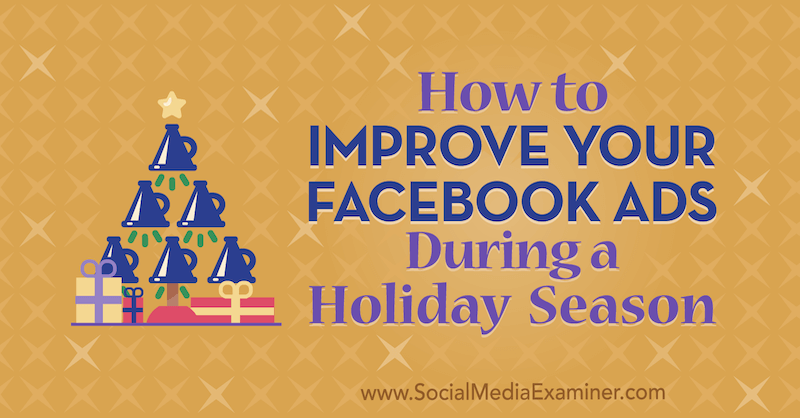
Why Seasonal and Holiday Ad Campaigns Matter
For many businesses, seasonal campaign performance can be the difference between an okay year and an unbelievable one. One date in particular—Black Friday, Valentine's Day, or Fourth of July, for instance—can bring a sharp increase in sales.
Generating strong sales is all about finding and connecting with the right customers and Facebook is one of the main marketing channels you can use to do this.
#1: Optimize Your Website and Product Landing Pages
Before boosting top-of-funnel traffic with your Facebook campaigns, ensure your website is high-converting. A high-converting funnel will generate more revenue per visitor, resulting in more efficient marketing spend. Focus on key funnel conversions like add-to-cart rate and purchase rate.
Google Optimize is one of the best free tools for optimizing your website in preparation for seasonal Facebook campaigns. It lets you run A/B and multivariate tests on your website's product pages and checkout pages to help increase conversions.
You can test various elements on your website and landing pages including:
- Images and videos
- Titles and subtitles
- Product descriptions
- Call-to-action (CTA) button colors and sizes
To get started, go to the Google Optimize website and sign up and install the Chrome extension.
Select the option to create your first experience. In the Create Experience window, type in a name for your test, paste the URL of the page you want to test, and select the type of experience you want to set up. For this example, we'll set up an A/B test for a swimwear company.
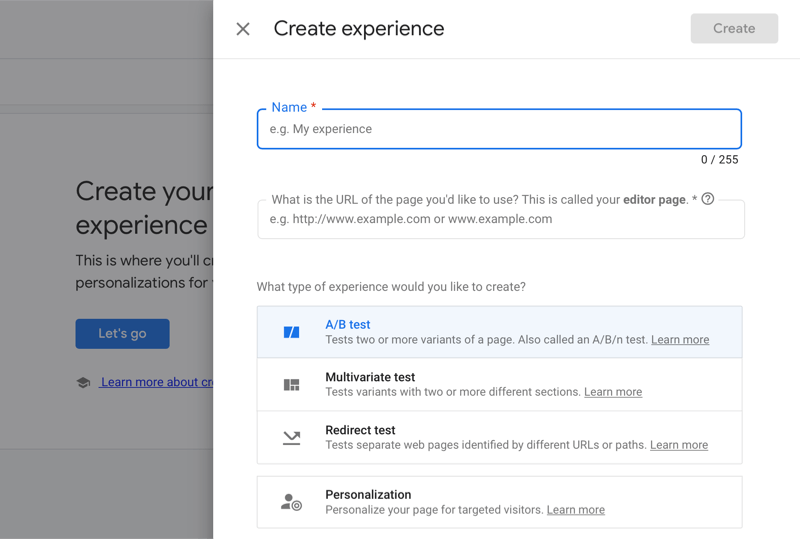
On the next page, click the Add Variant option.
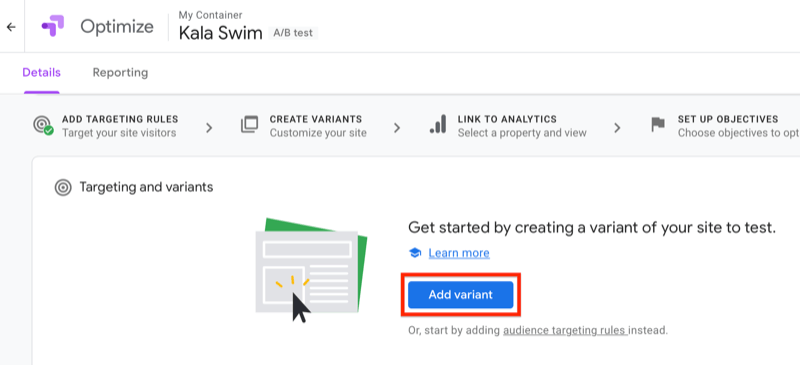
Next, choose how you want Google Optimize to allocate traffic to your page (a 50/50 split is the default).
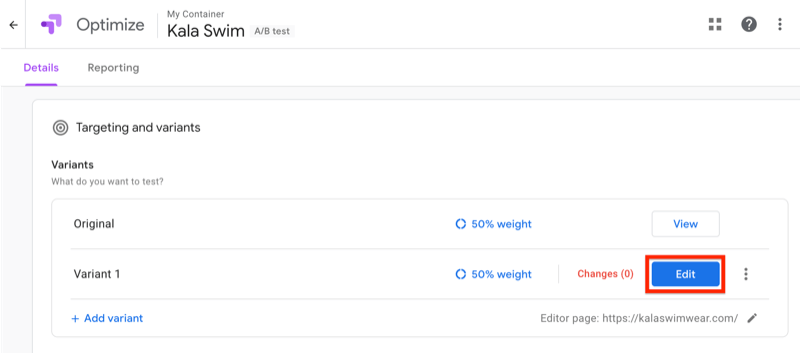
Get World-Class Marketing Training — All Year Long!
Are you facing doubt, uncertainty, or overwhelm? The Social Media Marketing Society can help.
Each month, you’ll receive training from trusted marketing experts, covering everything from AI to organic social marketing. When you join, you’ll also get immediate access to:
- A library of 100+ marketing trainings
- A community of like-minded marketers
- Monthly online community meetups
- Relevant news and trends updates
Then click the Edit button for the variant you want to test and make your edits. Below, you want to increase the size and color of the Buy It Now button. Click Save when you're finished.
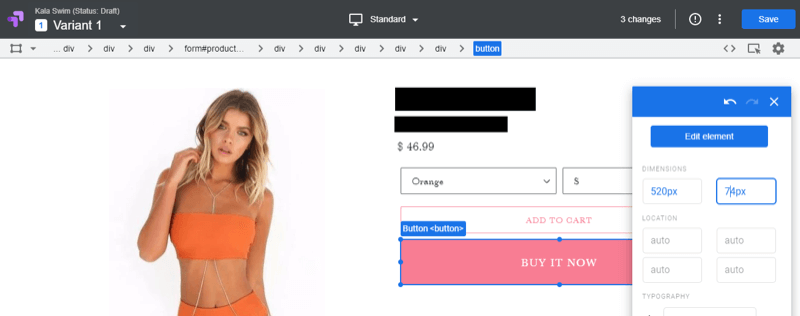
Finally, connect to Google Analytics and choose your objective (e.g., bounce rate or revenue).
That's it! After running traffic to your page, Google Optimize lets you know which of your two variants performed better. Here, Variant 1 (a larger CTA button) was the clear winner.
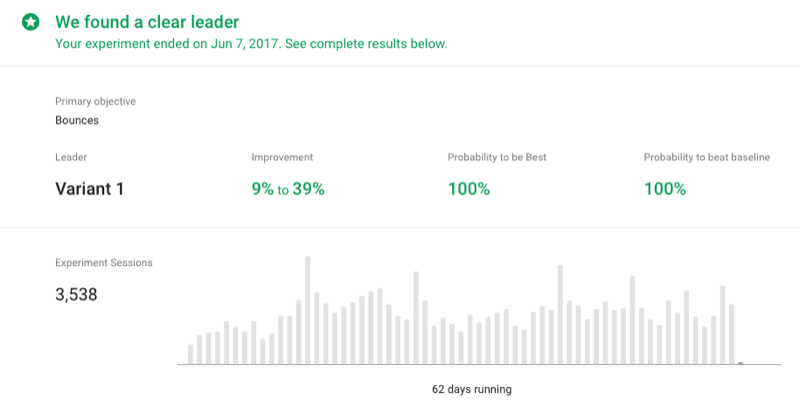
With Google Optimize, you can test multiple variations at once. Start testing early and apply what you've learned so you can generate more sales from your seasonal campaign.
#2: Use Google Analytics to Analyze Last Year's Website Traffic
Analyzing last year's traffic is especially important for existing businesses. If this is your first seasonal or holiday ad campaign, you can still use these steps to gather relevant information for future years.
Look at historical website data from the previous year and try to answer the following questions:
- When were the peaks in traffic last year? When did the holiday season begin ramping up?
- When were the peaks in revenue? Did they happen at the same time as the peaks in traffic?
Google Analytics provides all of the data you need to answer these questions. If you're not using it already, it's free and easy to install.
On the Google Analytics home page, you can see metrics like users, revenue, conversion rate, and sessions over time.
In the image below, the blue line represents sales. By observing this trend from the previous year, you can see that November had more sales compared to December. Sales peaked on Black Friday (noted by the green circle) and slowly declined afterward. Given this information, the business can plan to allocate more budget in November to maximize revenue.
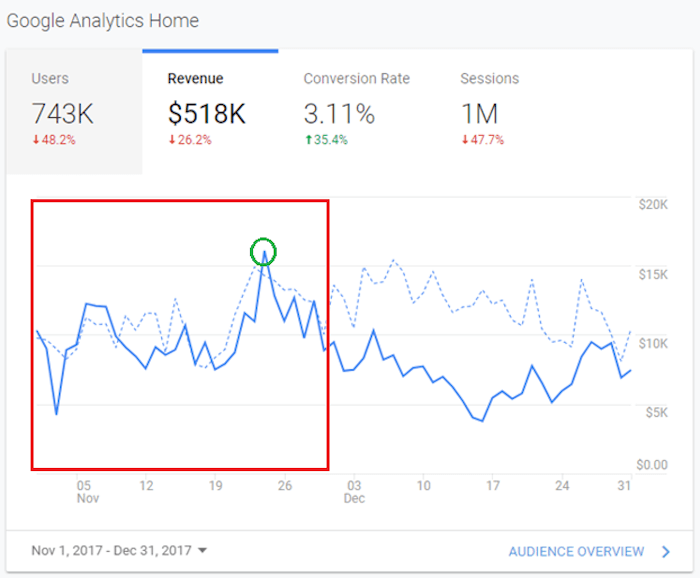
Another useful Google Analytics feature is the landing page report. To access this, go to Behavior > Site Content > Landing Pages. This report shows you the web pages that received the most traffic, sales, and revenue, which is especially helpful if you're selling similar products year over year.
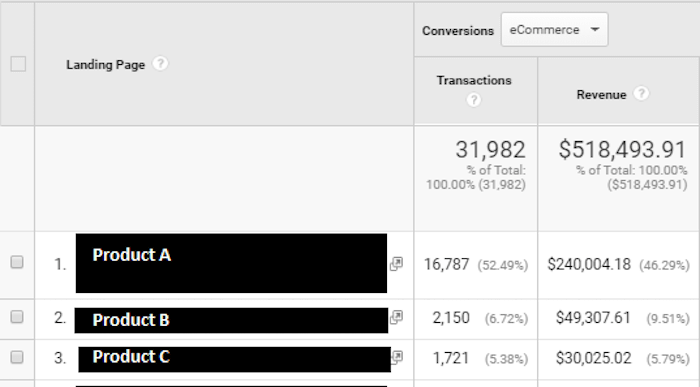
While trends may change, the data above offers insights into when and where to focus your marketing resources.
#3: Promote Articles and Videos to Warm Up Cold Facebook Audiences for Your Holiday Campaign
Combining Facebook ads with content (like blog posts, articles, and videos) is a great way to lower your CPM (cost per thousand impressions). Users are more likely to interact with content than promotional product ads and it's also helpful for warming up new prospects, especially if you're selling high-value products or services.
Let's look at two brands that effectively combine content with paid ads: Native and Harry's.
Native sells natural deodorant and their challenge is to prove their deodorant formula actually works. To overcome this, they run Facebook ads that lead to a third-party article called “5 Best Deodorants for Women.”

When users click on the ad, they're redirected to an article that showcases Native as the #1 deodorant pick. It explains why Native deodorant is effective and lets users click through the link to make a purchase.
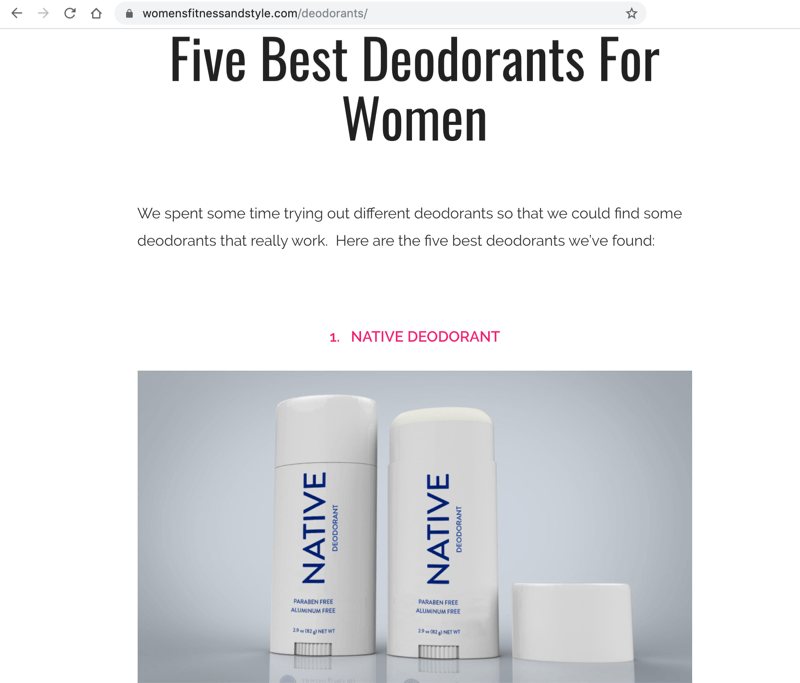
You can use a similar strategy to promote your blog posts or an article featuring your product. This tactic often helps warm up and build trust with leads, resulting in lower ad costs.
Harry's uses content throughout their entire ads funnel. They often run Facebook ads with videos that showcase their products. According to AdEspresso, video ads boost engagement (compared to images), which helps drive down ad costs.
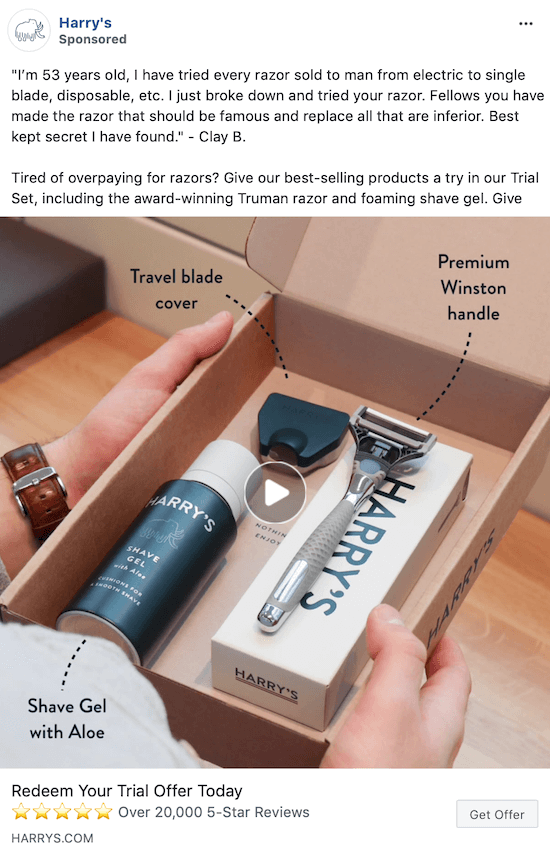
Users who click on the ad above are taken to a Harry's landing page that contains the post 7 Reasons Why Guys Are Loving Harry's razors.
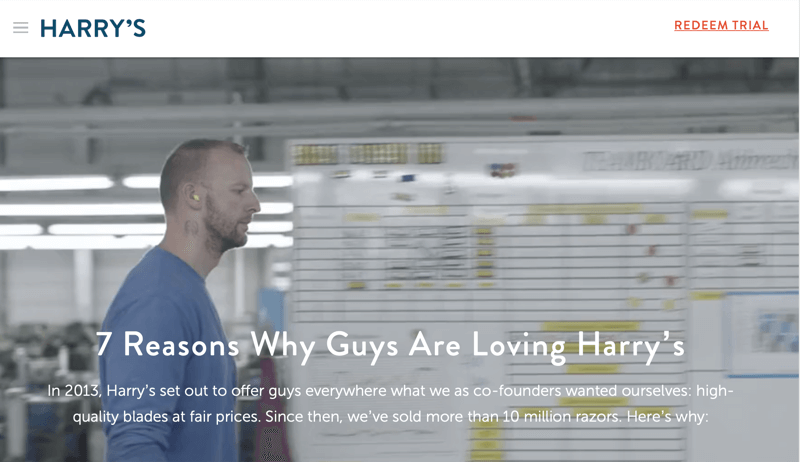
After users find out why Harry's razors are effective, they see a “Try Harry's Today” CTA at the bottom of the page.

Consider incorporating content into your own Facebook ads. By promoting blog posts or videos, you can compete in a crowded holiday ads environment.
Optimize Facebook Ad Elements for Better Return on Ad Spend
Running Facebook ads during a holiday season like Christmas or Hanukkah can be very expensive because many advertisers are competing for consumers' attention. This results in high CPMs.
The best way to fight high ad costs is to test your audiences, creative, and ad copy. The goal is to show the right messaging (ad copy and creatives) to the right customers (audiences) at the right time.
Let's dive into optimizing each of these elements in more detail.
Test Facebook Audiences
While you're likely already targeting audiences on Facebook, it's worth testing new ones for your holiday campaign.
Start by doing some research about your ideal customer. To do this, open Facebook Ads Manager and navigate to Audience Insights.
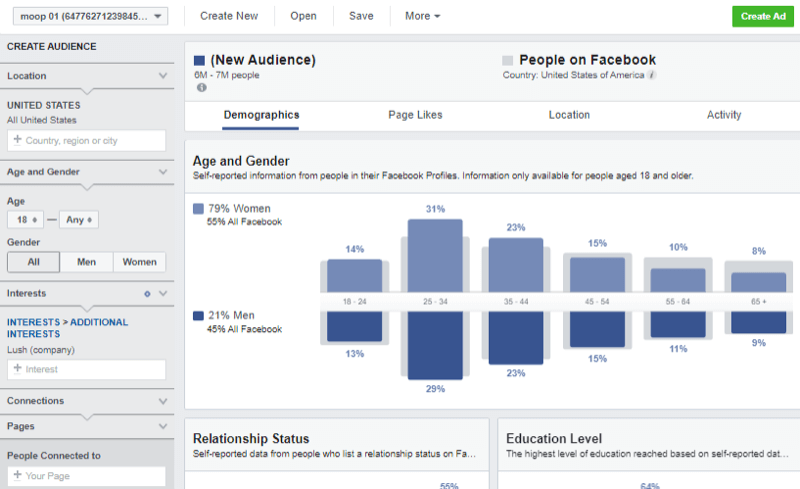
You can use Audience Insights to reveal data about users connected to your Facebook page or research relevant interests. This includes data like age range, gender, education level, page likes (interests), location, and more.

Discover Proven Marketing Strategies and Tips
Want to go even deeper with your marketing? Check out the Social Media Marketing Podcast! Publishing weekly since 2012, the Social Media Marketing Podcast helps you navigate the constantly changing marketing jungle, with expert interviews from marketing pros.
But don’t let the name fool you. This show is about a lot more than just social media marketing. With over 600 episodes and millions of downloads each year, this show has been a trusted source for marketers for well over a decade.
In this example, the research reveals that your core audience is female, ages 25–34, and interested in cosmetics brands like Birchbox and Sephora.
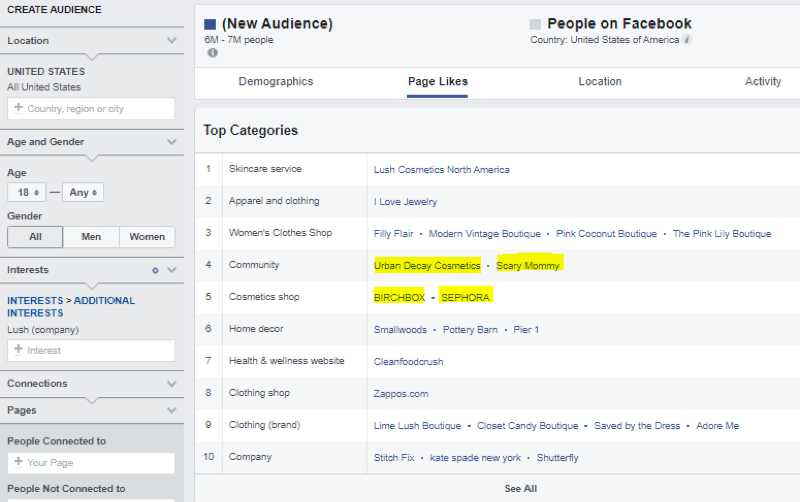
Now you can use this information to create a new Facebook audience. To do this, navigate to your Audiences dashboard in Ads Manager. Then click Create Audience and select Saved Audience from the drop-down menu.
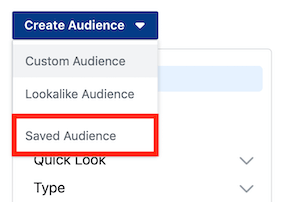
Populate the fields with the demographic and interest data you gathered from Audience Insights.
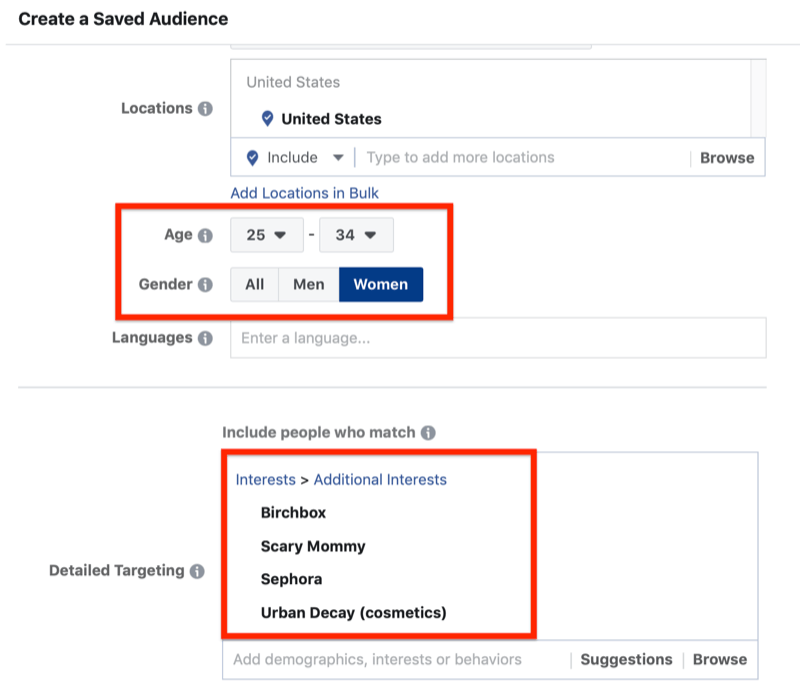
Repeat this process to develop several new audiences for ads testing.
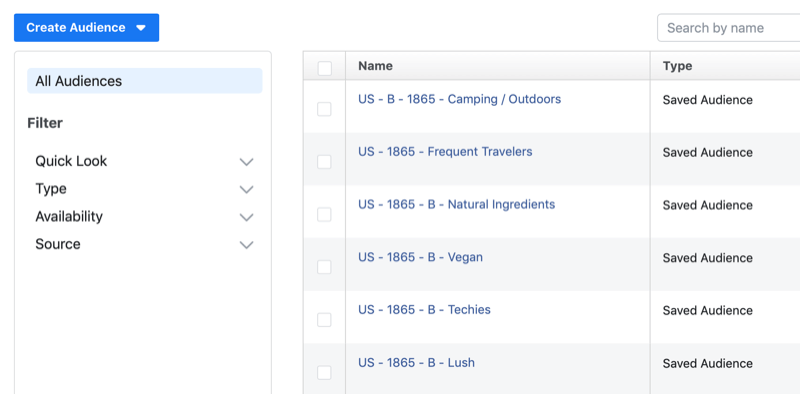
Test Facebook Ad Creatives
To test your Facebook ad creative, head to Facebook Ads Manager and follow the steps to create an ad set using one of your new audiences.

Within the ad set, create an ad to test different creatives and placements.
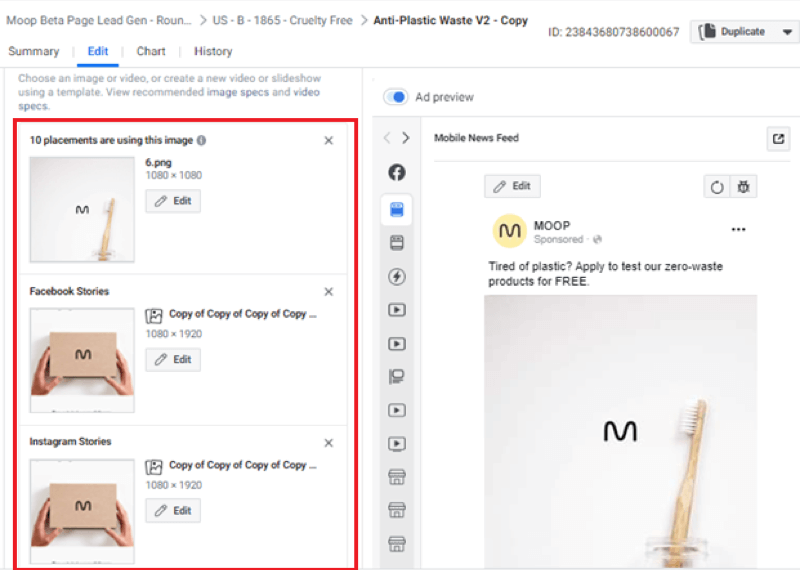
Note: This testing method is much quicker than creating several duplicate ads, each with their own creative. Facebook will also optimize toward the best-performing creative, further lowering your ad costs.
Test Facebook Ad Copy
Once you've populated the ad creative, it's time to test your Facebook ad copy. Try a few messaging angles to see what copy resonates with your new audiences.
If you're promoting personal care products, you might try messaging that talks about how natural your formula is (no parabens or sulfates) and then compare this to messaging that focuses on zero plastic waste.
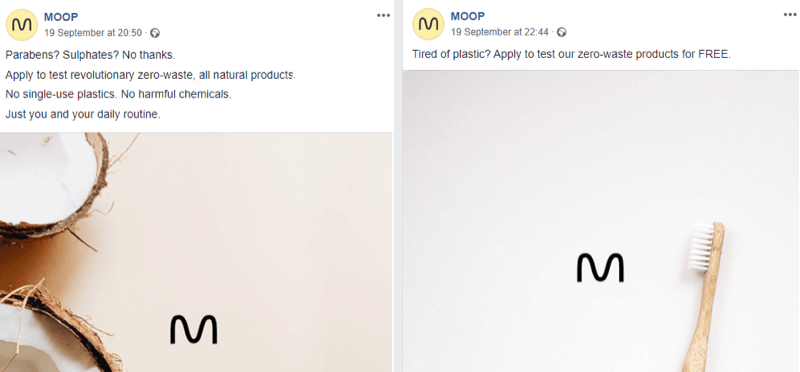
Finding the best-performing audiences, creatives, and ad copy will help you keep your ad costs down when acquiring new Facebook users.
#4: Scale Facebook Ad Campaigns
You've launched your optimized ads with a small budget and are seeing some positive results. How can you grow your ad budget while maintaining efficient spend?
Let's go over a few methods.
Duplicate Winning Ad Sets With a Tweak
One way to scale Facebook campaigns is to choose an existing ad set that's performing well (e.g., low cost per conversion) and then duplicate it, making a small change to the targeting, creative, or ad copy.
Pro Tip: Narrow your audience further. By refining your audience, you can find targeted users who are more likely to convert.
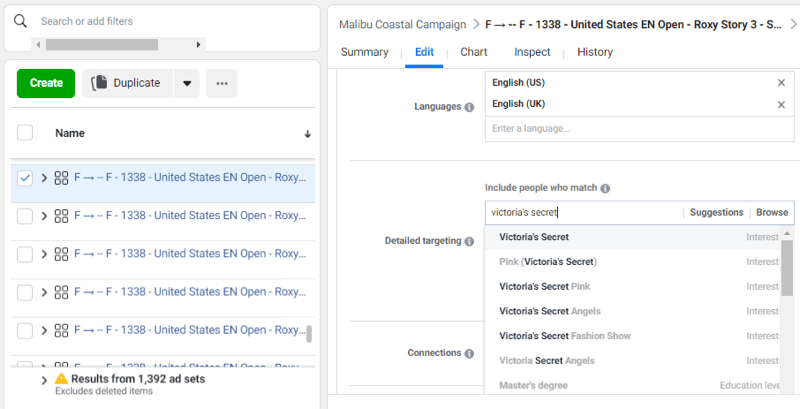
Duplicate Winning Ad Sets With a Higher Budget
Another option is to duplicate a winning ad set and set a higher budget.
Let's say you launch an ad set at an $11 daily budget with a low cost per conversion. Duplicate this ad set with a 2–8x higher budget. If the new ad performs well after 1–2 days, duplicate the process again.

Increase the Budget for a Winning Ad Set
Take a Facebook ad set that's performing well and increase the daily budget by 2–8x, and then track the results. If the ad set continues to perform well, you can increase the budget again after 1–2 days. If not, try reducing the daily budget until you see an acceptable cost per conversion.
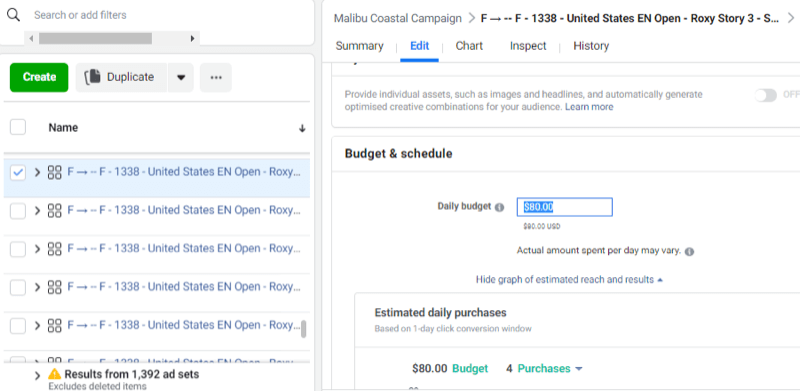
Duplicate the Same Ad Set With the Same Budget
Often, you can duplicate the same Facebook ad set with the same budget many times. Create 8–10 identical copies of the ad set and let them run. Then keep the ads with the lowest cost per conversion and turn off the remaining ad sets. Repeat this process every few days.

Start by testing the above methods to scale your winning Facebook ads. Sometimes it takes a bit of trial and error. By combining these methods, you can scale your campaigns aggressively and cost-effectively during your seasonal campaign.
#5: Fine-Tune Facebook Holiday Campaigns
You've put in the hard work and now you can let things run and make minor changes as you go. You'll want to track metrics like purchases, website visits, and ad spend.
In your Facebook ad account overview, it's easy to monitor these metrics. While you may see some day-to-day fluctuations, look for high-level trends. Is your cost per purchase gradually increasing? Are you seeing spikes in ad cost on specific days?
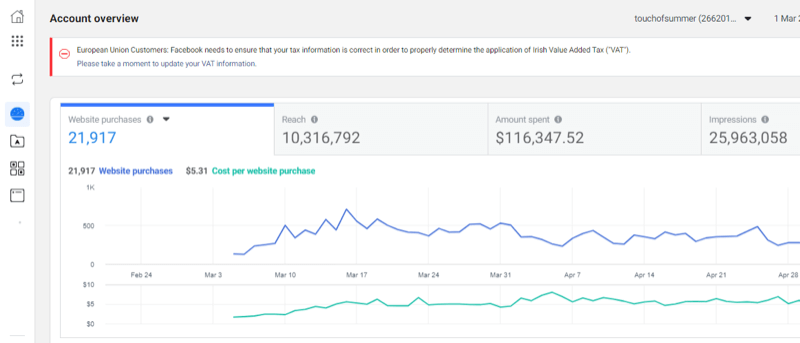
Also look at your demographics to see if certain characteristics are converting most often into purchases.
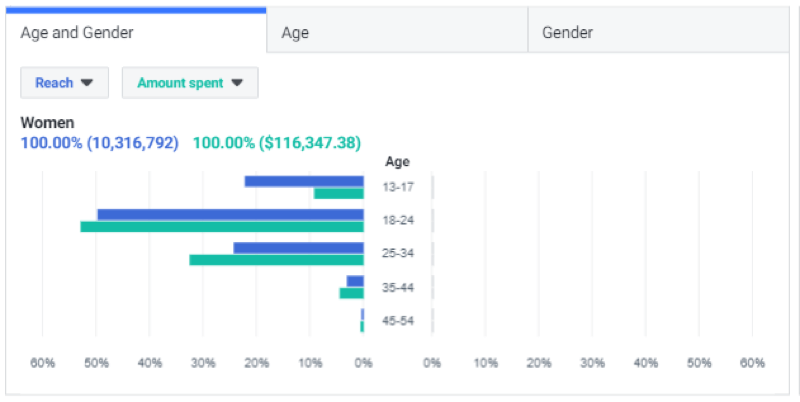
Drill down into your Facebook ads at the campaign, ad set, and ad level. Try launching more of your best-performing ad copy and creatives or adding new content into your ads mix.
Be sure to check your ads every few days but don't make drastic changes daily. Remember to focus on weekly or monthly trends.
Create a Backup Business Manager Account
One important step many marketers overlook is ad account stability. While running Facebook ads during the holiday season may start out well, unexpected issues can arise with your ad account.
To illustrate, Facebook's algorithm could flag your creative or ad copy, resulting in disapproval. If enough disapprovals happen all at once, your ad account can be disabled. With Facebook support reps overwhelmed during a busy holiday season, response times are slower and even a temporary pause in ad spend can affect your sales.
Facebook lets you have more than one Business Manager account. If you haven't already, create a separate Business Manager account (top-right corner) and have it ready as a backup.
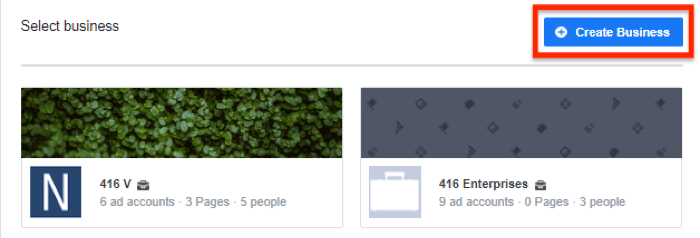
Within each Business Manager account, you can have up to five ad accounts. At a minimum, you should create a second ad account. Then if one ad account gets disabled, you can run ads from your second ad account.
To do this, head to Business Settings. Then navigate to Ad Accounts and click Add to create your new ad account.
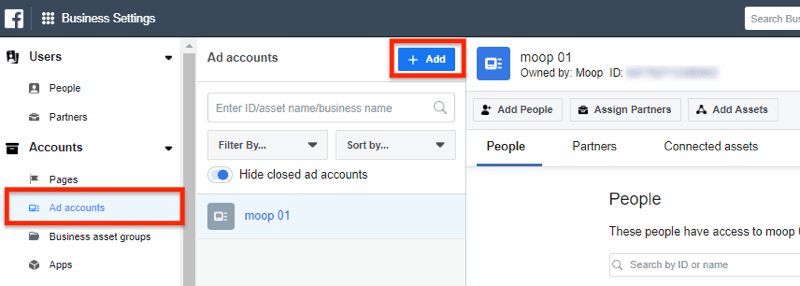
Having a separate ad account is especially important if you run ads for different websites or pages because it helps keep each separate line of business running.
Make sure you use a different payment method for each ad account. If Facebook disables one ad account, it will disable every account that uses the same payment method. You may also want to consider getting a second credit card or linking to your bank account as a second payment method.
The image below shows two ad accounts that were temporarily disabled during the Christmas season last year. Because this company had different payment methods for each account, they were able to keep ads active and running.
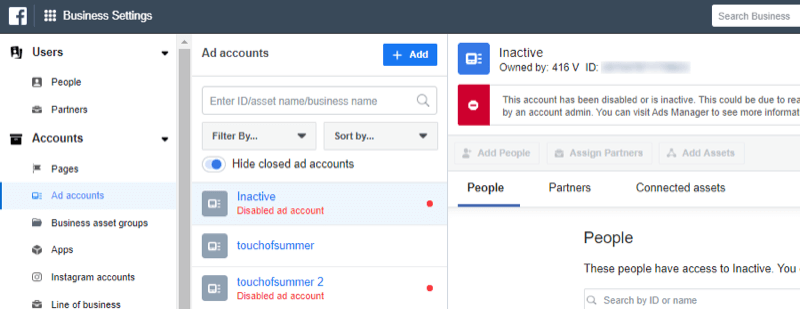
Conclusion
Running a holiday campaign can be stressful for any business. With proper preparation, you'll be able to reduce that stress and make the most out of the upcoming season.
Start by optimizing your website conversions and analyzing last year's data for historical spikes in traffic and sales. Then when you set up your campaign, be sure to optimize your ad copy, creatives, and audiences to lower your ad costs. Also consider introducing new types of content to your paid ads strategy.
Once your campaign is up and running, monitor ad performance and scale your winning campaigns.
What do you think? Are you planning a holiday campaign for your business? Which of these tips will you try? Share your thoughts in the comments below.
More articles on Facebook ads:
- Discover 12 techniques to reduce your Facebook ad spend.
- Find a step-by-step guide for creating a complete Facebook ad funnel that works.
- Learn how to scale Facebook ads by combining strategic bid capping with Facebook lookalike audiences.
Attention Agency Owners, Brand Marketers, and Consultants

Introducing the Marketing Agency Show–our newest podcast designed to explore the struggles of agency marketers.
Join show host and agency owner, Brooke Sellas, as she interviews agency marketers and digs deep into their biggest challenges. Explore topics like navigating rough economic times, leveraging AI, service diversification, client acquisition, and much more.
Just pull up your favorite podcast app, search for Marketing Agency Show and start listening. Or click the button below for more information.

